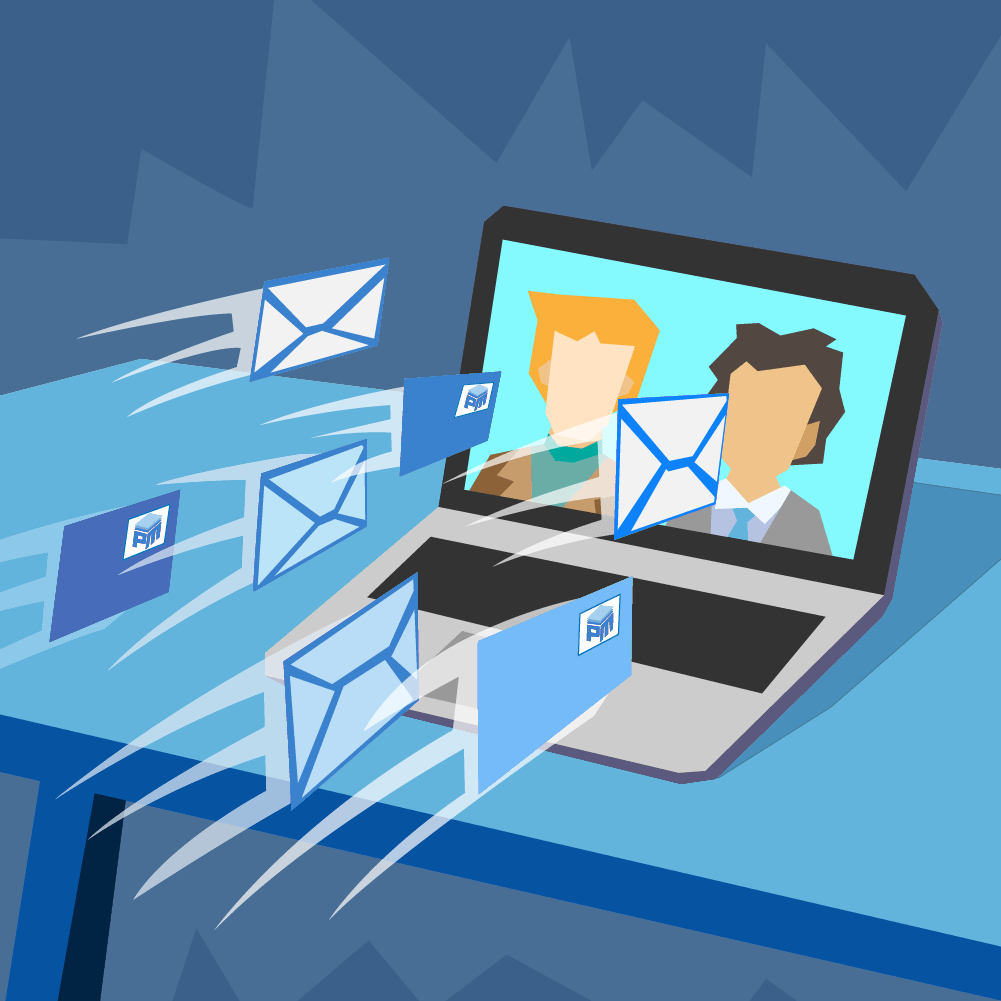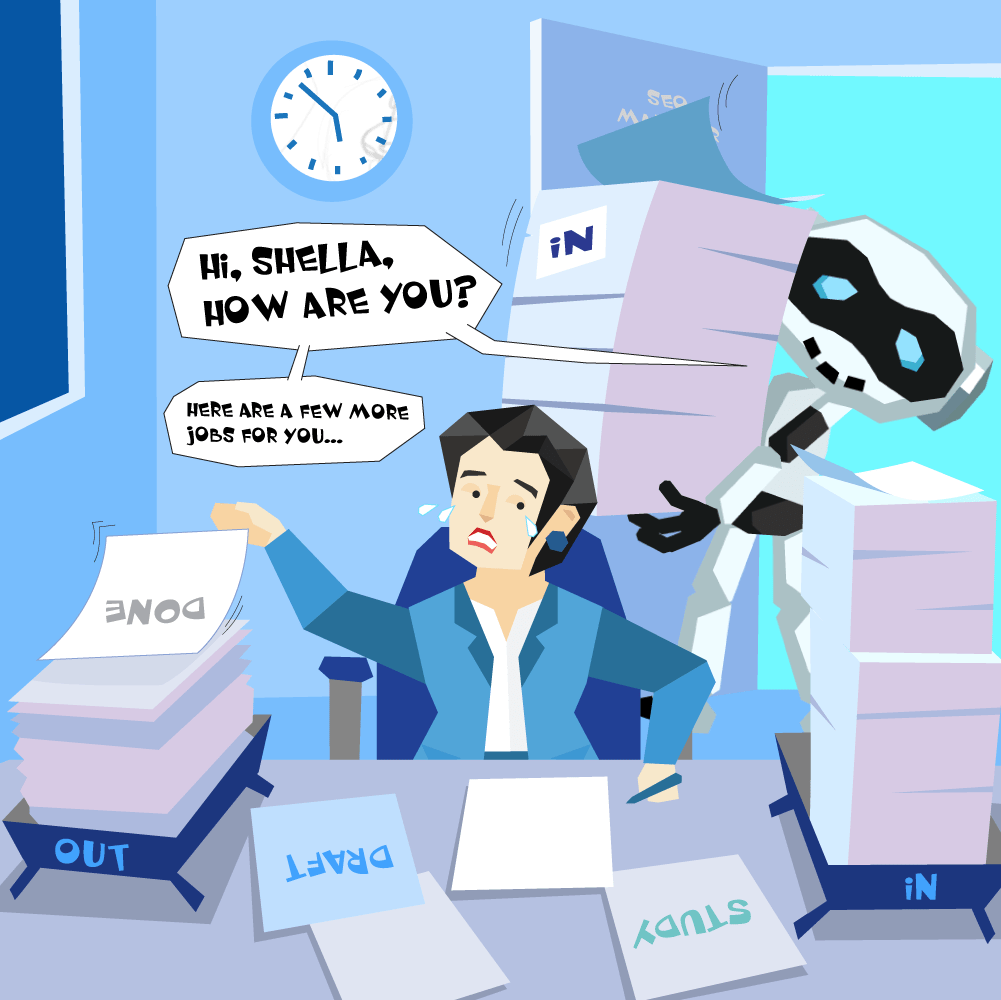Effective Email Marketing For Sales & Marketing Strategies

Email marketing is one of the oldest forms of online marketing there is. The first thing that the earliest Internet users did was set up an email account.
Although email marketing as a strategy has evolved significantly over the years, it remains one of the most popular ways to market a business online.
There are arguably two reasons for this. Firstly, you’d be hard-pressed to find someone with access to the Internet that doesn’t have an email address.
It’s estimated that there are almost four billion email users in the world today, a number that is expected to grow even higher. Secondly, email marketing has one of the highest ROIs (return on investment) of any online marketing strategy.
Such a positive ROI is due to how affordable it is to run an email campaign and how effective email marketing can be.
However, a successful email marketing strategy requires the implementation of the best possible practices. Many businesses are still caught in the past when it comes to email marketing — just sending mass emails to everyone on their email list. Such a strategy is incredibly inefficient. To ensure that your email marketing efforts help you achieve your marketing goals, devise a targeted email marketing strategy.
What Is Targeted Email Marketing?
The customers and leads that make up your email list are all different from one another. Outdated email strategies treat the email list as a single entity. That’s a huge mistake. If you send the same email content to everyone on your email list, that content is bound to be irrelevant to many of the customers and leads that read it. The solution to this issue is to target your email marketing efforts.
Targeted email marketing is a strategy that consists of segmenting your email recipients based on a variety of factors, from their purchasing history to the data you have on each individual to their location and more. By implementing a targeted email marketing strategy, you’ll be able to send different types of email content to other groups of leads and customers instead of just sending the same email to everyone.
The Many Benefits Of Targeted Email Marketing
Sending out an email blast to your entire email list might be a lot easier than targeting your email efforts, but the results will be poor. Many recipients will quickly grow tired of continually receiving emails that aren’t relevant to them and will be more likely to unsubscribe. There’s a risk that your emails may even be marked as spam. By implementing a targeted email marketing strategy, your email marketing campaigns will become significantly more successful for the following reasons:
Send More Relevant Emails
Segmenting your email list allows you to send email content to recipients only if it’s relevant. For example, if you run a nationwide clothing line and you want to send an email that provides tips on how to choose the right winter coat, you’ll be able to target people who live in a colder climate. Without segmentation, you would send that content to people who live in the south and have no need for winter coats. The ability to send more relevant emails means that your content will have an actual impact on your recipients.
Increase Engagement
Both customers and leads will be much more engaged if they’re consistently receiving content relevant to their needs. Targeting smaller segments of your email list also means that you can send highly targeted emails to your audience’s niche. Your emails will be more personalized, which will be more likely to garner a response.
Improve Sales
Sending more relevant content to your recipients will make it easier to nurture your leads and convert them into customers, significantly impacting your sales. You can use your existing customers’ purchasing history to identify potential cross-selling and upselling opportunities. You can automate emails that identify these opportunities based on purchases your customers make, which significantly improves your chances of increasing your revenue.
Build Stronger Relationships
Because your emails will be tailored to your recipients’ individual needs, it will showcase your effort to build relationships with them. As a result, they will become more loyal to your brand and more likely to become long-term customers. And as you know, a long-term customer is infinitely more valuable than any single sale.
Increase Customer Retention
Consistently emailing customers relevant content will help ensure that they don’t get annoyed with what they may perceive as “spammy” tactics. You will be less likely to lose customers through unsubscribes as a result. By keeping your brand at the top of mind, you will also improve the odds that they will continue to make purchases from your company throughout the future.
5 Targeted Email Marketing Best Practices
The benefits of targeted email marketing are so many that there’s no reason not to adopt such a strategy. Especially when you consider the fact that the added cost of targeting your email marketing efforts will not be very high, yet the potential increase in ROI certainly will be. Of course, your targeted email marketing efforts will depend on your ability to implement a targeted email marketing strategy effectively. Here are some of the best practices to ensure that your targeted email marketing strategy is successful:
1. Create A Mailing List
You can’t target the people on your email list if you don’t have any data that distinguishes one person from the next. When building your email list, ask specific questions on your email opt-in forms to collect the data you need. For example, their location, the industry they work in, job title, age, etc. You’ll want to ask questions that pertain to your business and your customers. You need this data so that you can tailor your emails to your different audiences.
However, don’t ask too many questions on an opt-form. Many people will decide it’s not worth the effort to fill out the form — or they may feel uncomfortable with the level of information you’re asking for. It’s a fine line to walk. Fortunately, you can always gather more data after they’ve signed up, such as by emailing a survey.
2. Define Customer Personas
One of the challenges of creating targeted email content is ensuring that everyone on your email list is addressed. The last thing you want is to send tailored content to one part of your audience and nothing to another. Use the data that you’ve collected from your customers to develop buyer personas.
A buyer persona is the ideal representation of a type of customer. If you’ve created accurate buyer personas, you should match everyone on your email list to the buyer persona that best reflects them. It’s a way to categorize your customers and leads. When creating email content, you can then tailor that content to a specific buyer persona. You will also be able to track how often you’re engaging with each persona to ensure that you don’t accidentally ignore anyone on your email list. By developing buyer personas, you’ll ensure that the content you create for each persona will be relevant.
3. Divide Your Mailing List Into Segments
Buyer personas will be immensely useful when it comes to targeting your email list. However, it’s best to divide your list into different segments as well. Some of these segments may contain more than one buyer persona. For example, maybe your organization sells business software. You have five different buyer personas for your business. You also sell to both B2B and B2C companies. You could segment your email list into these two categories: B2B and B2C. These two categories may share some of the same buyer personas. But you may create content that will be relevant to all B2B or all B2C companies. The following are a few other examples of how you can further segment your email list:
Location
Segmenting by location is important because it not only allows you to target leads and customers with geo-specific content but also allows you to identify people who may not be qualified as leads. For example, if you only offer your service within the U.S., then trying to nurture a lead in Japan will be a waste of everybody’s time. Geo-based content can be useful in several ways. It ensures that location-based content is relevant to the people you send it to. For example, if you’re a nationwide company and opening a new Seattle location, that content will only be relevant for leads and customers in the Seattle area.
Demographics
Demographics are an essential element of your buyer personas; however, specific buyer personas may share the same demographic information. For example, you may have more than one female buyer persona. Consider segmenting your email list by demographic information, such as age and gender. This segmentation allows you to send content that’s relevant to specific demographics. For instance, if you’re a clothing company that’s created email content about female clothing, then there’s no point in sending that content to your male leads and customers.
Interests And Behavior
Knowing your leads and customers’ interests and behaviors can allow you to tailor your content to their specific needs much more effectively. You can also use this knowledge to segment your email list. For example, you can create a segmented list of customers who have made a specific purchase on your website. You can then use this segment as a cross-selling opportunity that may not be relevant to customers who did not purchase the product or service it’s based on.
4. Optimize Your Segmented Email Lists
Segmenting your email list isn’t just essential to your ability to deliver the right content to the right leads and customers. It’s also crucial for guiding your content creation in the first place. Optimizing your segmented email lists ensures that you develop content tailored for each list you’ve created. You should also build landing pages for the content you’ve created that specifically target the appropriate list. While personalized content will help increase the click-through-rate, make sure the landing page for that content is effective at converting.
5. Review Your Email Marketing Strategy
Once you’ve followed the best practices for implementing a targeted email marketing campaign, continue to review your email marketing strategy. Use analytics to evaluate the performance of your email marketing campaign. For example, monitor metrics such as open rates, number of unsubscribes, sharing rate, click-through rate, and conversion rates. These metrics should help you determine whether your emails have been engaging and whether there are problem areas that need to be addressed.
Monitoring your emails’ performance is something that you should continue to do throughout the future to adjust your strategy accordingly. The information you gather via email analytics can help you fix your email content strategy and give you more information that you can use to improve how you segment your email lists.
Implement A Targeted Email Marketing Strategy Today
Because of the high ROI, email marketing has long been one of the most popular online marketing strategies. However, email marketing has evolved over the years — as have email users. Try implementing a targeted email marketing strategy to get the absolute most out of your email marketing campaigns. It will help you retain your leads and customers and improve your ability to nurture them.









